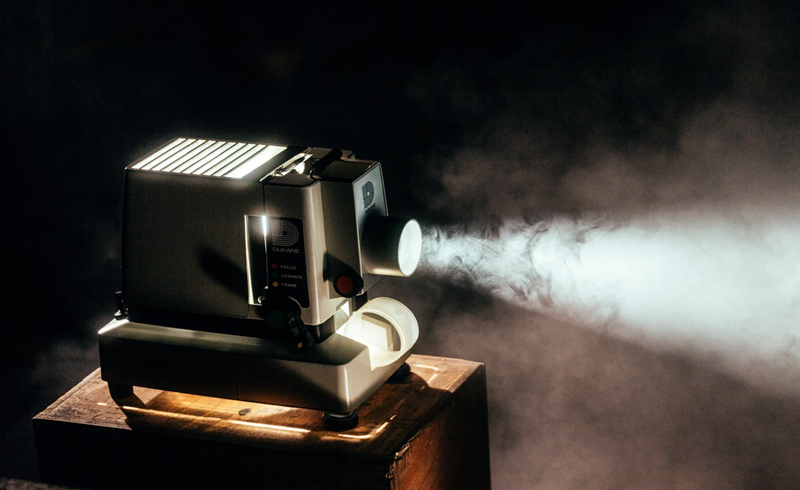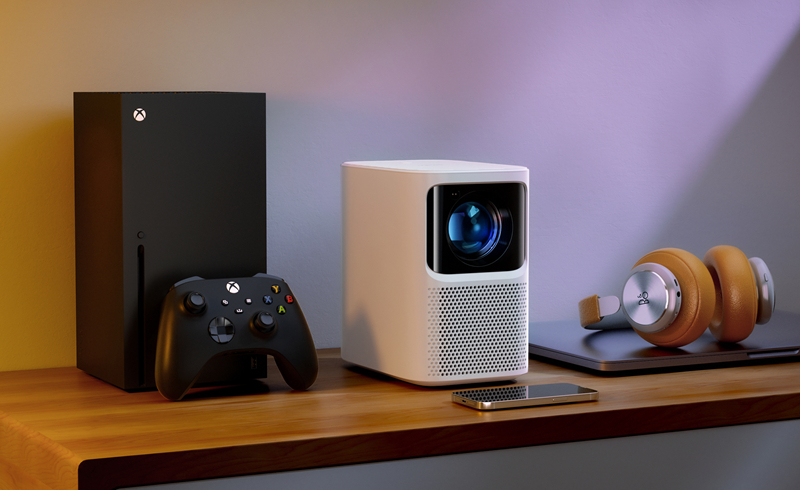
Many projector beginners wonder how much power a projector use. This guide will collect and conclude the common power of projectors available on the market, helping you to know the power consumption of common projectors.
How Much Power Does a Projector Use?
The power consumption is determined by the work and power of the device. According to the formula, Total Work Done (W) = Power (P) x Time (t). Generally, a portable projector or pico projector consumes more power than a big projector or complex projector. For projectors, the power consumption is determined by the optical machine, light engine, speakers, fans, and more.
If the light source of a projector is fixed, the higher the brightness, the more power consumption. That’s because the light output and heat dissipation require more power.

Then, let’s check the Power of common projectors for different types. We find popular projector models on the market for different types and chart them as shown below.
Portable Projectors

Most portable projectors feature a small body and average configuration. Generally, they are small and lightweight, which is better to carry outside.
According to the table below, most portable projectors have 50-60W of power, which consumes about 0.05-0.065 KWh.
| Projector Name | Power | Power Consumption Per Hour |
| Anker Nebula Solar | 57W | 0.057 kWh |
| BenQ GV30 | 65 W | 0.065 kWh |
| Emotn H1 | 65 W | 0.065 kWh |
| Samsung Freestyle | 50W | 0.05 kWh |
Pico Projectors

Pico projectors are smaller than most portable projectors. Specifically, you can hold them with a single hand and place them on your palm.
Compared with the portable projectors above, pico projectors have smaller sizes and consume less power. For example, AAXA P7 consumes just 0.038 kWh per hour under normal conditions.
| Projector Name | Power | Power Consumption Per Hour |
| AAXA P7 | 38 W | 0.038 kWh |
| WEMAX Go Advanced | 65 W | 0.065 kWh |
| YABER Pico T1 | 9 W | 0.009 kWh |
| Philips Picopix Max | 65 W | 0.065 kWh |
Entry-level Video Projectors

Most entry-level projectors have no smart OS and feature average brightness and hardware configuration.
Here are some popular entry-level video projectors. We can find that their power consumption is bigger than pico projectors. Their power consumption per hour is about 0.11 kWh-0.135 KWh.
| Projector Name | Power | Power Consumption Per Hour |
| Emotn N1 | 110W | 0.11 kWh |
| YABER Y21 | 125 W | 0.125 kWh |
| GooDee YG600 | 135 W | 0.135 kWh |
Home Theater Projectors

Compared to entry-level projectors, home theater projectors have improved a lot in terms of image resolution, image brightness, system, audio, and more.
These projectors usually have a smart operating system, better audio, and a good ventilation system. Therefore, its power consumption is also higher than portable projectors and some entry-level projectors. Their power consumption is about 0.12 KWh-0.385 KWh.
| Projector Name | Power | Power Consumption Per Hour |
| Epson Home Cinema 5050UB | 373 W | 0.373 kWh |
| Dangbei Mars pro | 150 W | 0.15 kWh |
| Optoma UHD35 | 330 W | 0.33 kWh |
| BenQ X3000i | 385 W | 0.385 kWh |
Laser TV Projector

As a TV replacement, laser TV projectors usually have high configurations, including high brightness, powerful speakers, excellent ventilation, and more. Therefore, the integrated power consumption is high.
Then, let’s see the laser TV projector’s power consumption. We can see the average power consumption is the highest in the list.
| Projector Name | Power | Power Consumption Per Hour |
| Epson LS500 | 366 W | 0.366 kWh |
| BenQ V7050i | 480 W | 0.48 kWh |
| Hisense 100L9G TriChroma | 320W | 0.32 kWh |
| Samsung Premiere LSP9T | 410W | 0.41 kWh |
You may be interested in Projector Buying Guide.
Conclusion
After checking the power consumption of different types of projectors, we can conclude that Pico projectors and portable projectors have low power consumption because of their relatively simple design and small size. Laser TV projectors have the highest power consumption because of complex components and more powerful speakers. The entry-level projectors have a moderate power consumption that is similar to a common TV set.
Related Posts




